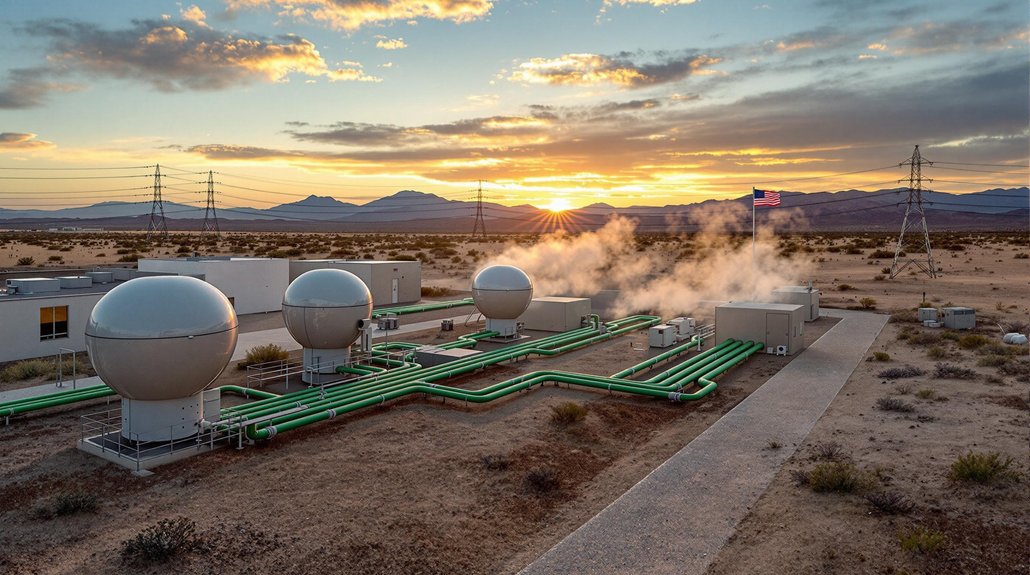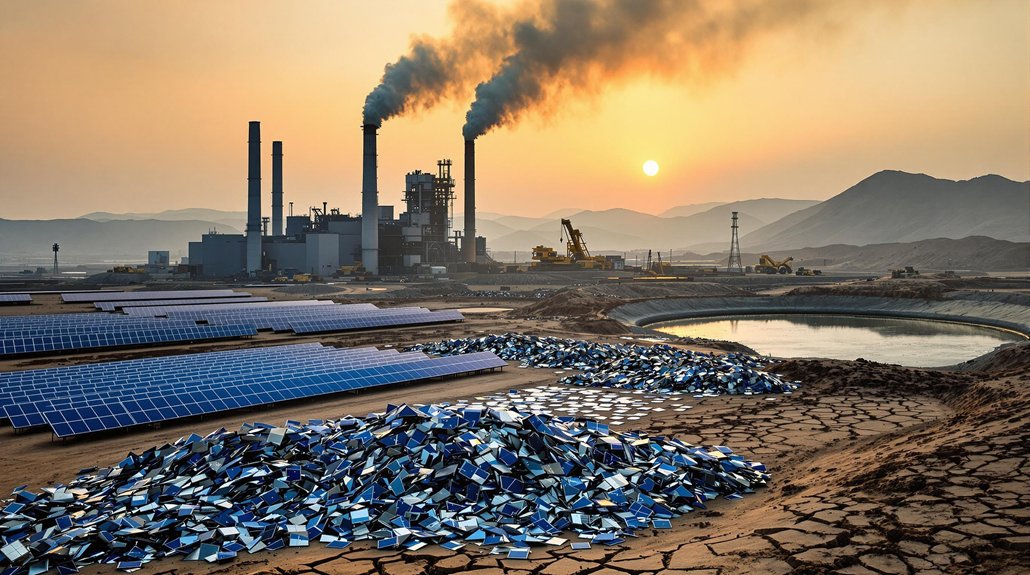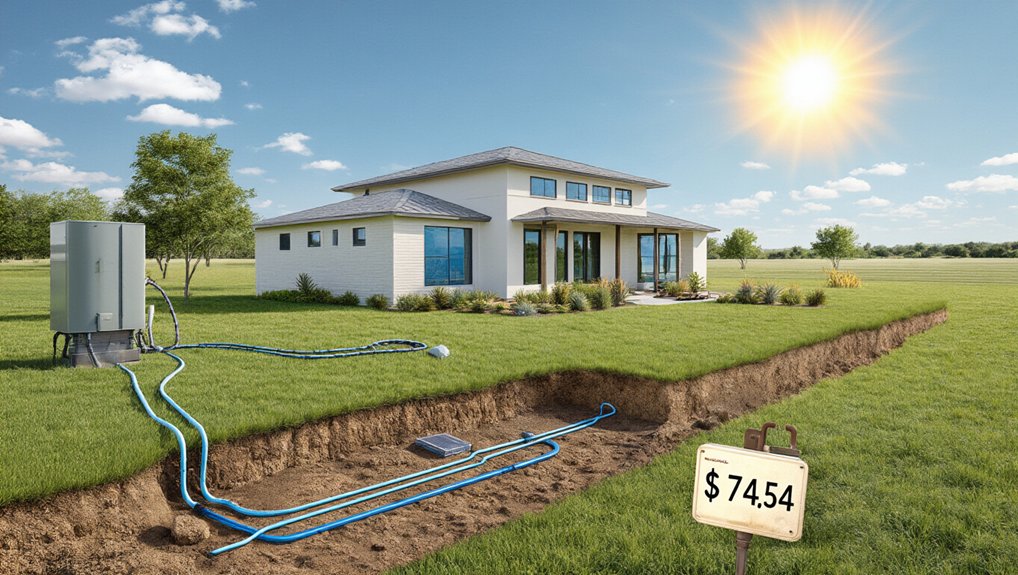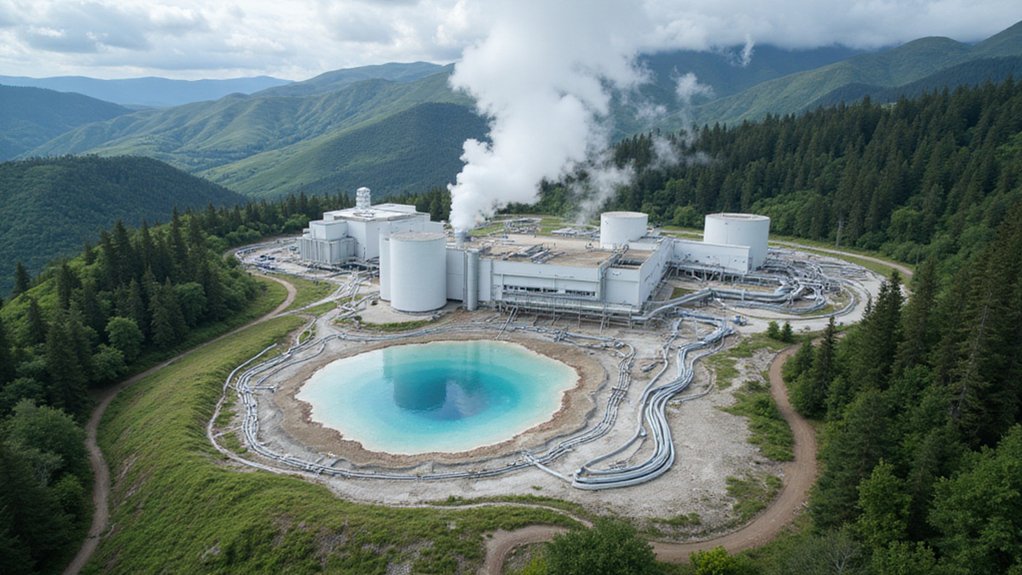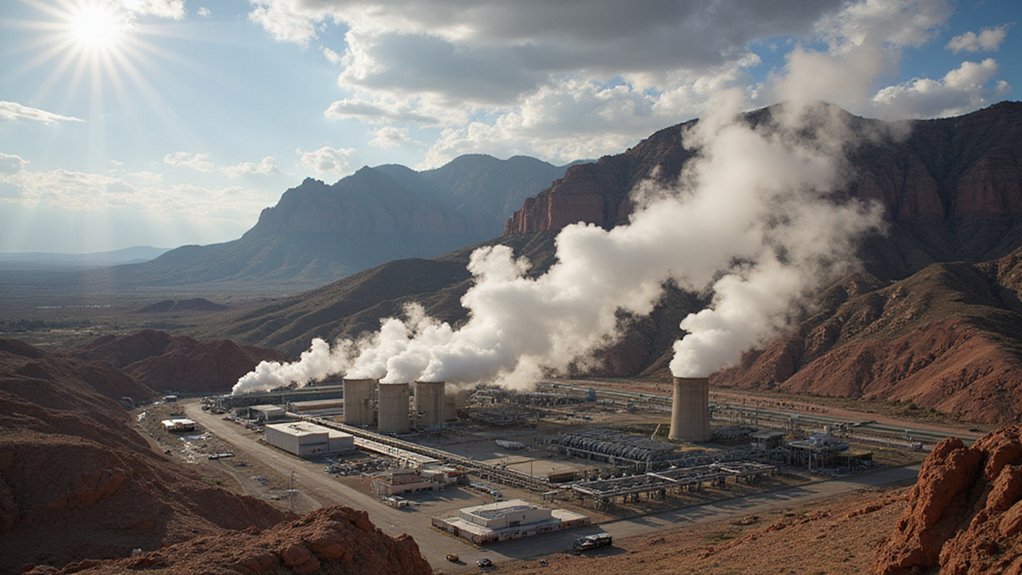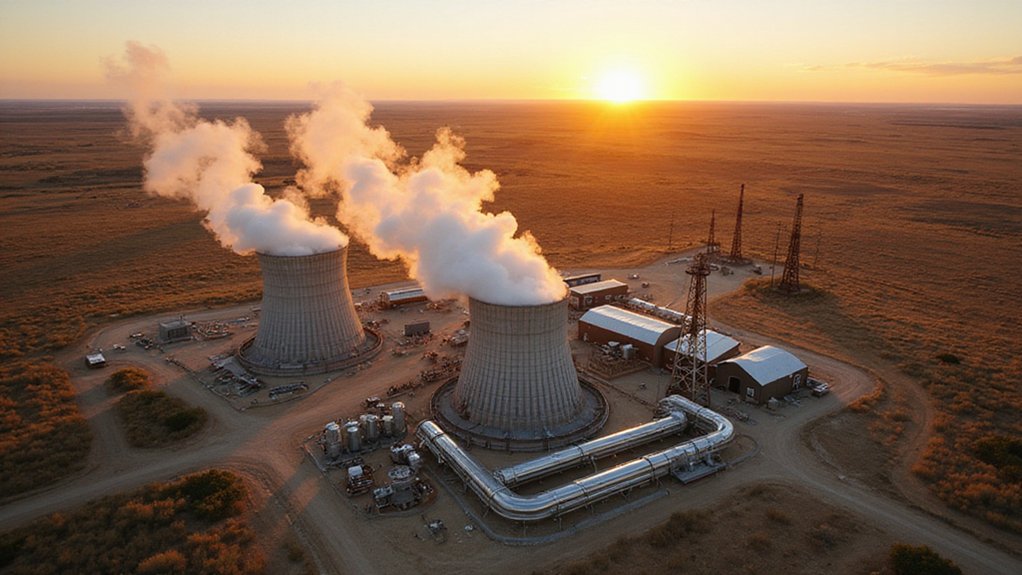The Pentagon just gave GreenFire Energy’s closed-loop geothermal tech an “Awardable” status. Huge deal. Their GreenLoop system taps Earth’s heat, delivering 10-100 MW of steady power that keeps working when the grid fails. Military bases need reliable juice during crises—no sunshine required, unlike those finicky solar panels. Already set for Naval Air Facility El Centro, this tech promises predictable energy costs without the emissions drama. The brass seems pretty impressed.
While the Department of Defense frantically searches for reliable energy solutions that won’t fail during a crisis, GreenFire Energy has stepped into the spotlight with its closed-loop geothermal technology. The company recently achieved “Awardable” status through the DoD’s Tradewinds Solutions Marketplace process. No small feat. This designation opens doors for GreenFire to develop geothermal plants on military bases across the country. The technology was selected specifically to provide reliable electricity supply during grid outages.
And honestly, it’s about time. The military needs power that won’t quit when everything else does. GreenFire’s GreenLoop technology taps into Earth’s heat using a closed-loop system that extracts energy from deep underground. It’s versatile enough to retrofit idle wells or expand existing fields. The tech can even make previously uneconomic geothermal resources suddenly worth developing. Magic? No. Just smart engineering.
Military brass love this stuff because it offers real independence from the notoriously vulnerable grid. When missiles fly or hackers attack, bases with GreenFire systems can keep the lights on. The technology delivers scalable baseload power from 10 MW up to 100 MW. That’s serious juice, available 24/7, without the mood swings of solar or wind. With an impressive availability factor of 95%, geothermal energy remains unaffected by weather conditions or time of day, making it ideal for mission-critical military operations.
Guaranteed power when everything else fails—no grid dependence, no fluctuations, just reliable energy that keeps the mission going.
They’re already making moves. GreenFire has an agreement to support a geothermal initiative at Naval Air Facility El Centro. They’re not going it alone, either. The company has partnered with heavy hitters like Baker Hughes and Vallourec to provide materials and expertise for their ambitious projects. Much like their work with Energy Development Corporation in the Philippines, GreenFire aims to enhance power production from idle geothermal wells that would otherwise remain unproductive.
For penny-pinching Pentagon bureaucrats, GreenFire offers predictable long-term energy costs. No volatile fuel prices. No emissions. No waste streams. Just clean, reliable power that keeps humming when everything else fails.
GreenFire isn’t stopping with military applications. The company aims to develop 100 MWe of geothermal capacity by 2030 and become a global geothermal producing powerhouse by 2040. Ambitious? Sure. But with the military’s backing and a technology that actually works, they might just pull it off.
